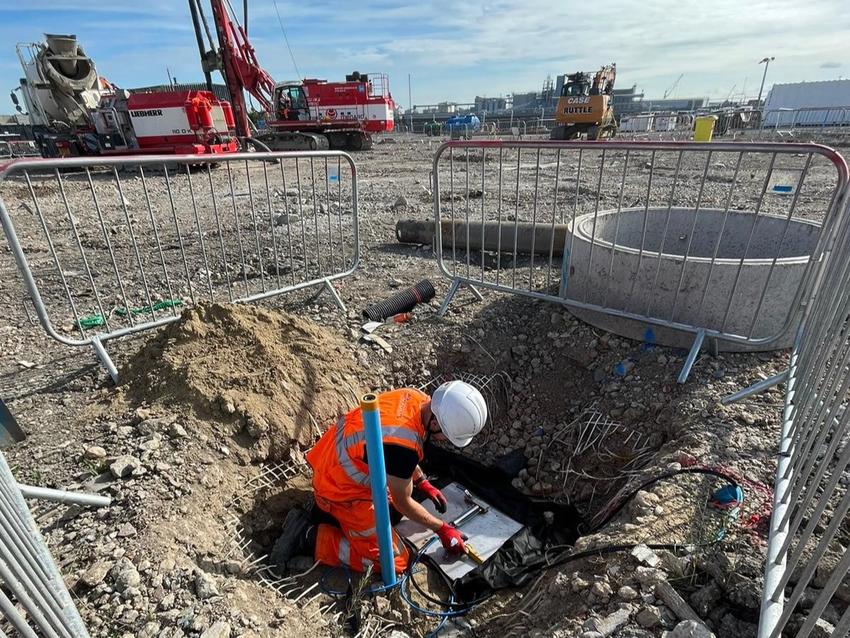GEO-Instruments are providing a robust ground settlement monitoring solution for the construction of a large new electronic scrap recycling facility in Kent.

When operational, the major new facility will sample and process waste electronics material so raw materials can be reclaimed and re-used.
Located directly adjacent to the Thames river, the site has a high water table and sandy, wet ground conditions and significant piling works are required for ground improvement across the site.
The monitoring system was required to measure ground movement caused by the piling works, with strict limits on settlement imposed by the project specification.
Earlier this year GEO-Instruments engineers installed a combined monitoring scheme of automated and manual settlement plates.
Continuity and reliability of data was the highest priority in the design of the monitoring scheme. The automated settlement plates system, while built to be robust, is at risk of damage due to the heavy duty work and plant movement taking place on site. Including manual plates in the design built in backup data and redundancy in case of failure of the automated system.
The automated system provides reliable, hourly data without the need for on-site access to the instrumentation. The manual plates are read by the site team on a regular basis.
Automated settlement plates measure changes in pressure caused by settlement or heave and are linked via fluid tubing to a shared reservoir. Data is collected and sent to an online server via an on-site wireless gateway. The monitoring system is powered using a solar panel to prevent reliance on mains power.
The manual plates are fitted with rods that protrude above ground level through casing installed in the soil above the plate. 3D prisms are attached to these rods and are measured by a surveyor.

Automated and Manual plates were installed next to each other, with rods from the manual plates sticking out above ground through plastic casing.
All settlement plates were installed at 1-2 metres depth below ground level prior to ground improvement works. Tubing and cabling for the automated plates were installed into a duct and buried for further protection against damage.
Monitoring is planned to continue for six months alongside the piling work on site.
Compared to other geotechnical instrumentation, settlement plate systems are relatively inexpensive and simple to install, but automated applications are less common. This project provided a good opportunity to install both variations side by side.
Settlement plates are an ideal system for cost-effective ground movement monitoring. Though less accurate than some other, more expensive systems they are reliable and robust and therefore well suited to ground improvement applications.
Read more about our settlement monitoring installations.